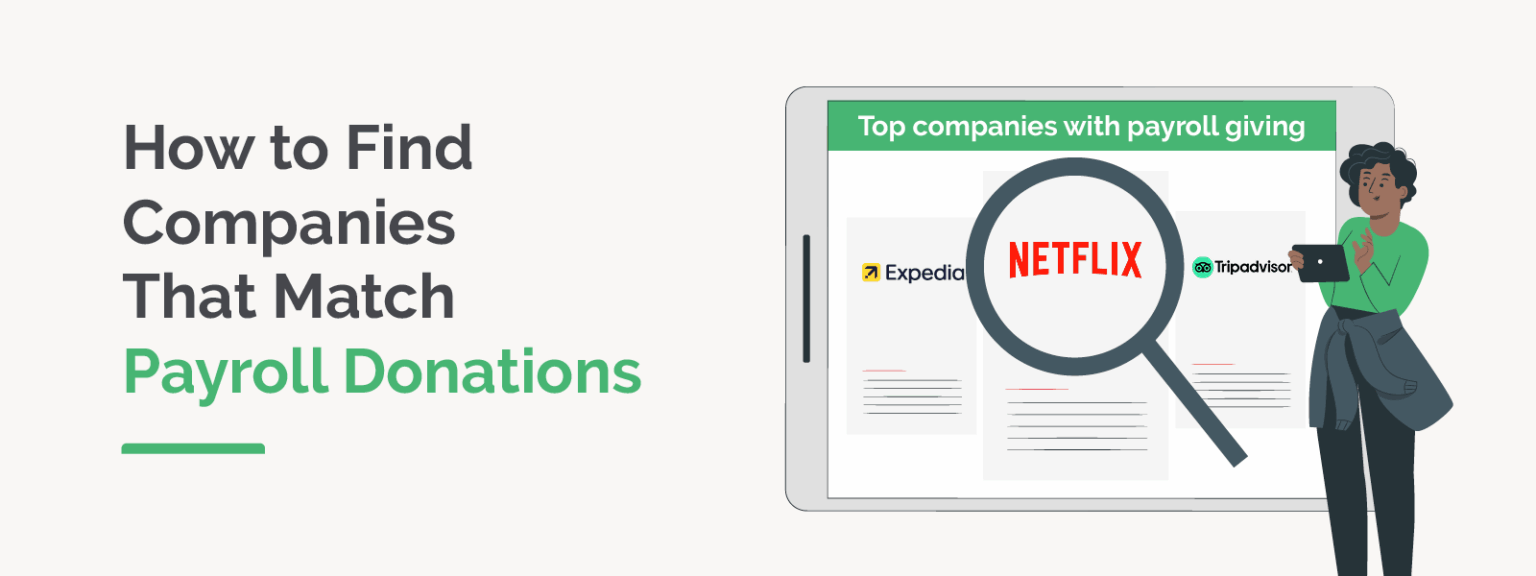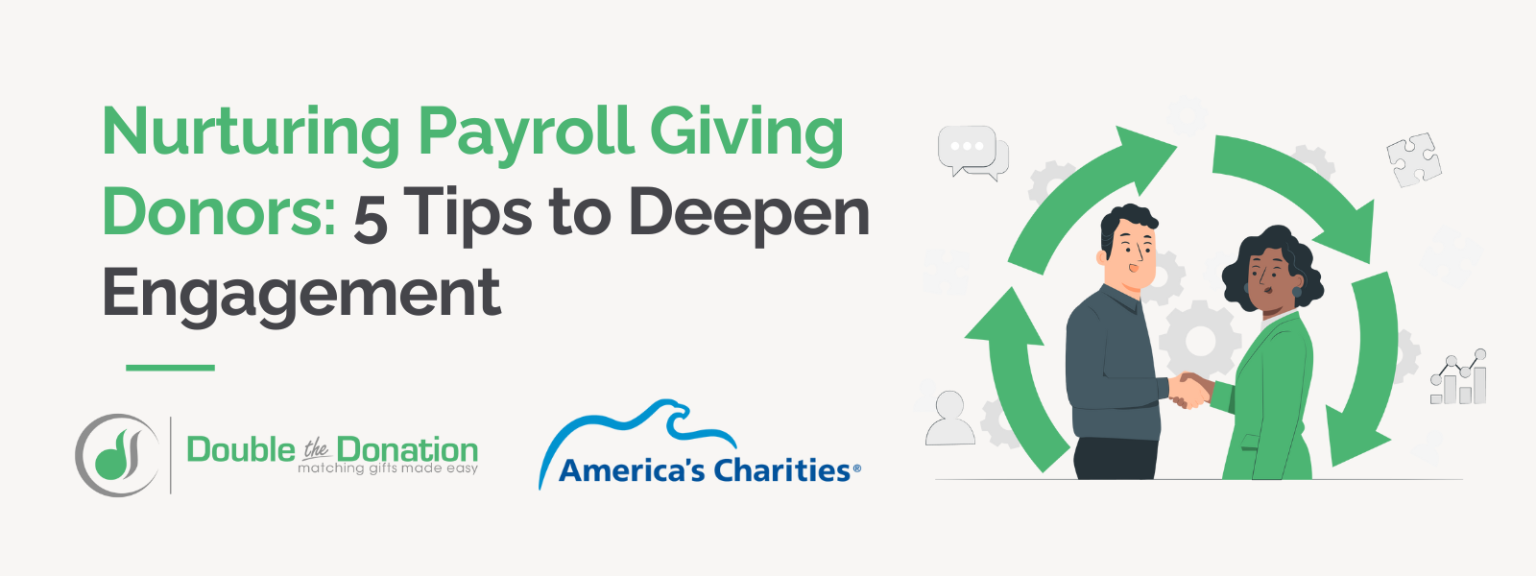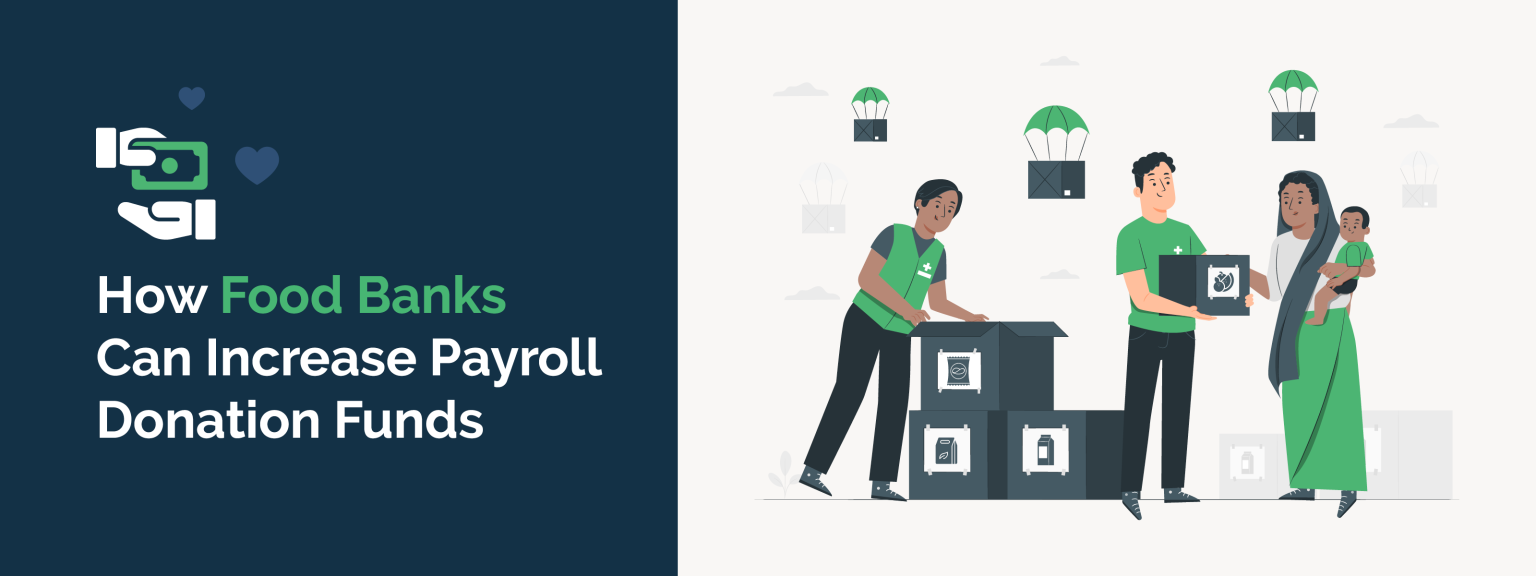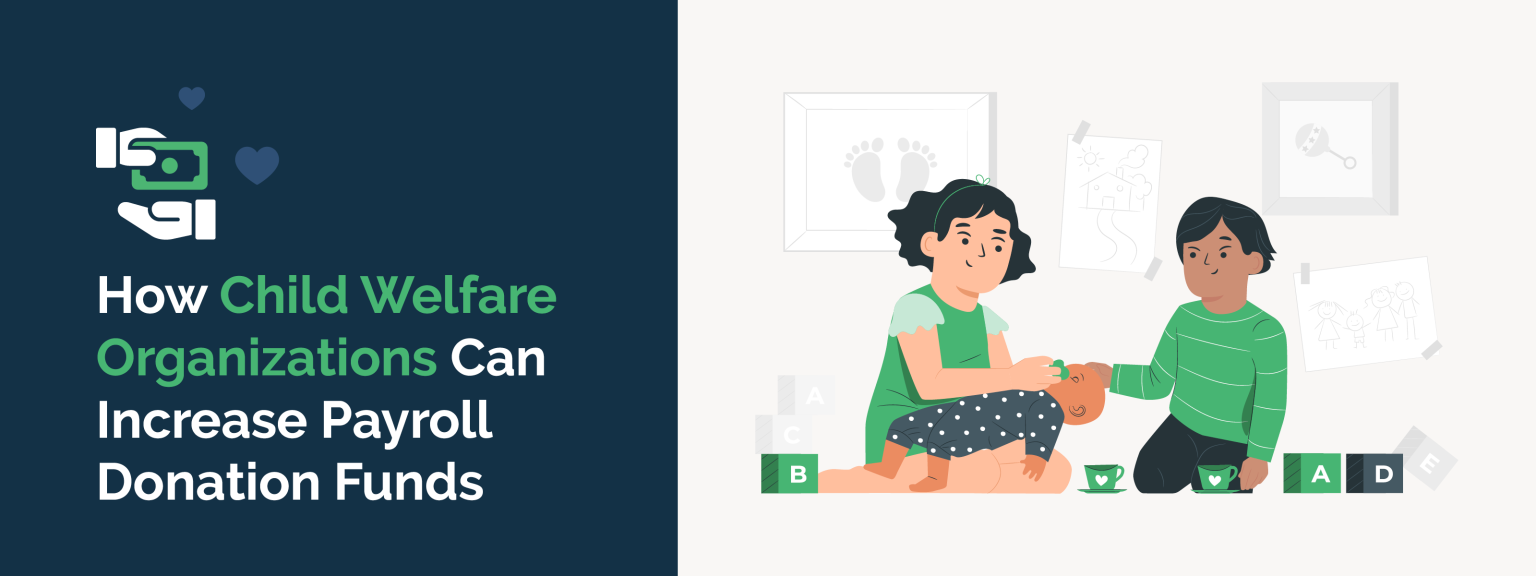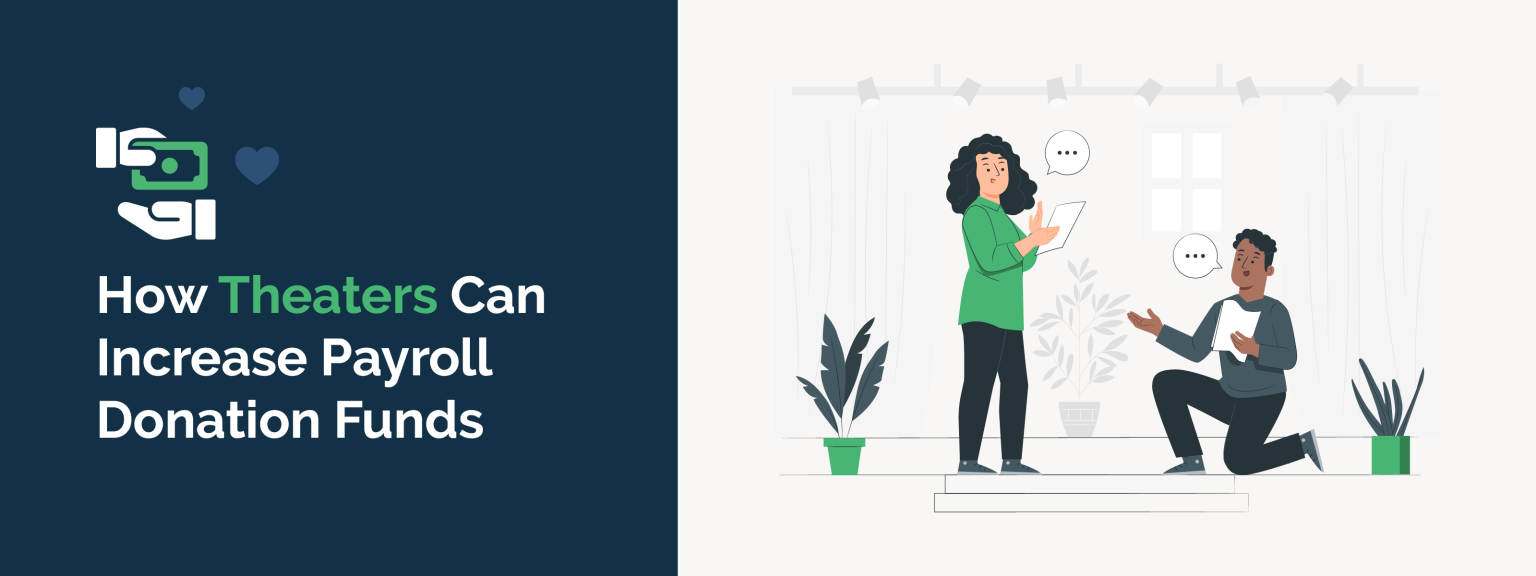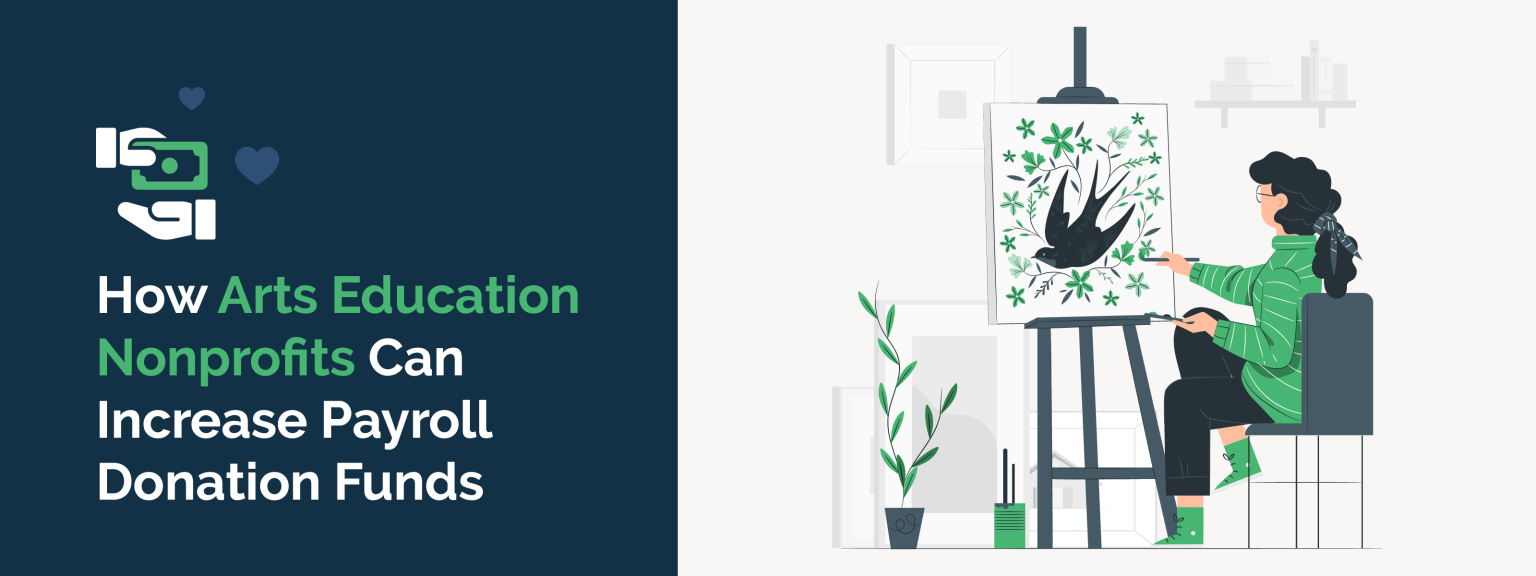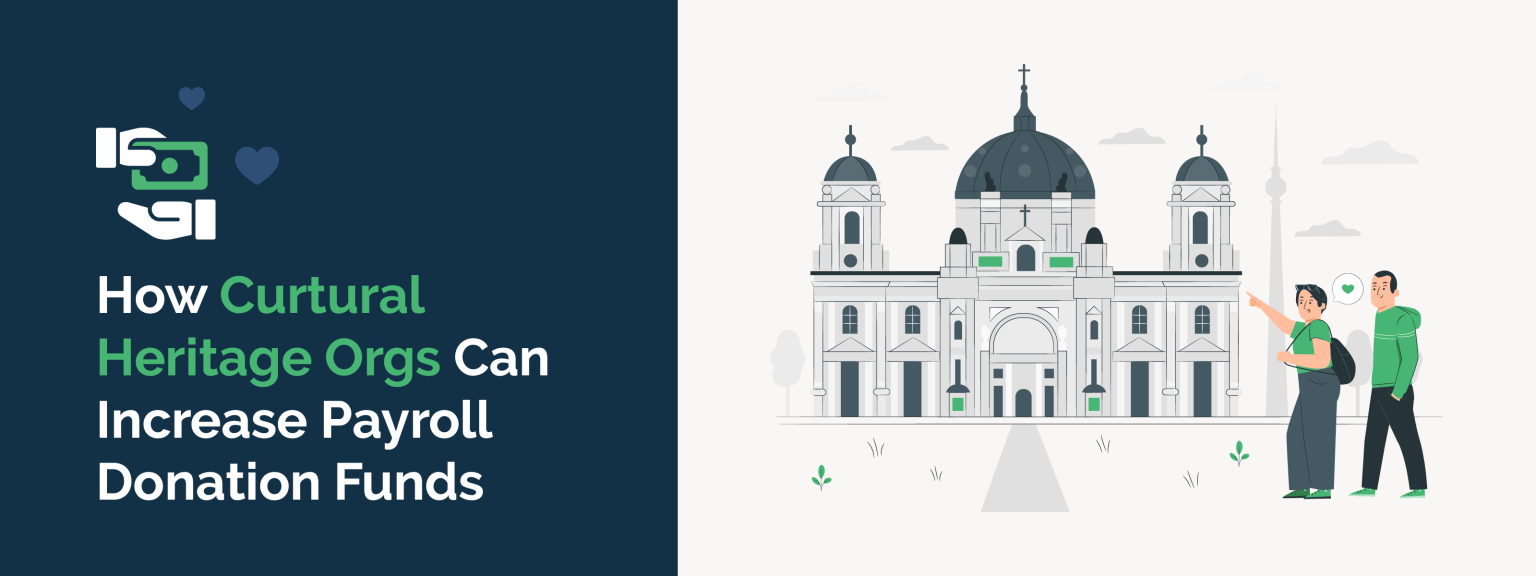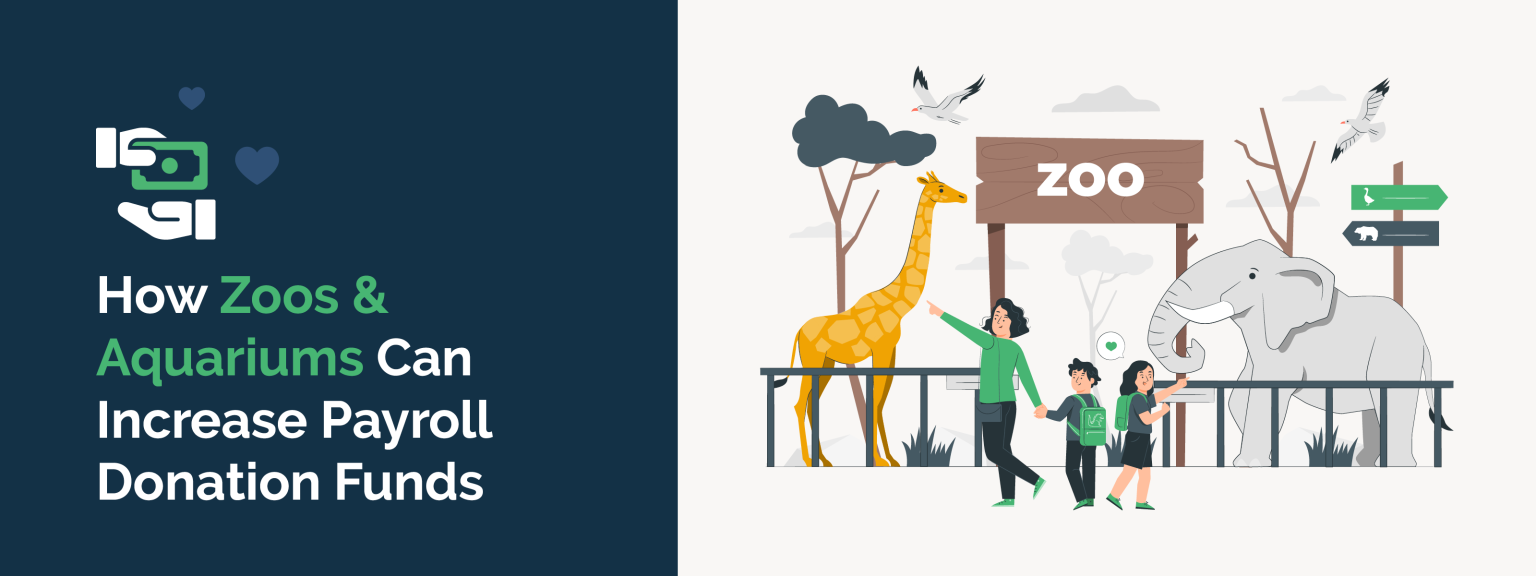How to Find Companies That Match Payroll Donations
Payroll donation matching programs have become a valuable tool for employees looking to enhance their charitable contributions. With the help of these kinds of initiatives, employees can significantly amplify their financial support for causes they care about. Simultaneously, employers have the unique opportunity to foster a culture of giving within their workforce, showcasing their commitment to social responsibility.
This guide explores everything you need to know about payroll donation matching programs: how they work, the benefits they offer, and actionable steps you can take to make the most of them. We’ll walk you through how to find companies with matching gift programs, how to maximize the impact of your incoming contributions, and how you can take full advantage of your supporters’ employers’ payroll matching policies.
- Understanding Payroll Donations
- Benefits of Matching Payroll Gifts
- How to Find Companies That Match Payroll Donations
- Maximizing Your Impact
For nonprofits, working with businesses that match payroll donations offers a unique opportunity to boost funding, increase donor engagement, and enhance community relationships. Whether you’re looking to attract new donors or maximize the impact of existing supporters, payroll donation matching can be a game-changer for your fundraising efforts. Let’s begin with the basics.
Understanding Payroll Donations
Payroll donations refer to the automatic deduction of a portion of an employee’s salary for charitable contributions. Rather than making one-time donations from a personal bank account or writing checks, employees can set up recurring contributions directly from their paychecks. This method offers simplicity and convenience, ensuring that contributions are made regularly, without requiring employees to take additional steps each time. Payroll donations are generally modest, making them manageable for employees while providing a consistent source of funding for nonprofit organizations.
One of the standout features of payroll donations is that they are typically aligned with corporate social responsibility initiatives. As employees commit a portion of their earnings to charity, their companies may encourage this generosity by matching the donations, effectively doubling or even tripling the impact of each contribution. This can turn a small donation into a significant gift for the nonprofit organization, increasing its ability to fund projects, support its mission, and reach more individuals in need.
What Are Payroll Donation Matching Programs?
Payroll donation matching programs are initiatives implemented by employers where they match the donations made by employees to nonprofit organizations. The match typically occurs on a dollar-for-dollar basis, but some employers offer more generous matching, such as 2:1 or 3:1 ratios. In such programs, employees can choose a nonprofit organization that aligns with their values, make regular payroll contributions, and then submit a request to have their employer match their donation.
The employer’s match is typically subject to a few restrictions, including maximum match limits per employee per year. These limits can vary, with some employers matching donations up to a few thousand dollars annually, while others may have more modest ceilings. Additionally, employers may have a database of eligible charities to choose from, or they might allow employees to contribute to any recognized 501(c)(3) organization.
While employees (and their favorite nonprofits) benefit from the matching aspect, the employer also gains significant advantages from offering such programs. These benefits include enhanced employee morale, stronger engagement, and an improved public image as a socially responsible company. It’s a win-win situation that promotes both corporate philanthropy and individual employee participation.
Benefits of Matching Payroll Gifts
Participating in payroll donation matching programs offers numerous benefits for both employees and nonprofits. Understanding these advantages can motivate employees to engage in these programs actively.
For Employees
Employees who participate in payroll matching gift programs can enjoy:
-
Increased Impact: By having their donation matched, employees can maximize their financial contribution to charitable causes. For instance, if an employee donates $50, and the company matches it, their total contribution becomes $100—doubling the impact of their giving. This can make a significant difference to the nonprofit that is receiving the donation, as even small contributions become much more substantial.
-
Tax Benefits: Donations made to eligible nonprofit organizations may be tax-deductible, which can provide financial advantages for the employee. As a result, employees might be able to reduce their taxable income and lower their tax bill, in addition to receiving the employer’s match.
-
Community Engagement: Contributing to causes that align with an employee’s values fosters a sense of connection to the larger community. It can create a sense of fulfillment and pride, knowing that their efforts are helping a cause they care about. This enhances overall well-being and strengthens the bond between the employee, their company, and the communities they serve.
-
Corporate Alignment: Many employees take pride in working for a company that supports causes they believe in. Participating in matching programs can deepen their connection to their workplace and create a shared sense of purpose among coworkers. It can also help employees feel that they are making a positive difference in society, which contributes to higher job satisfaction and loyalty.
For Nonprofits
Nonprofits benefit from payroll giving and matching gift programs in several ways:
-
Increased Funding: Matching gifts directly increase the funds raised for nonprofit organizations. A matching donation program amplifies the contributions of employees, enabling organizations to stretch their budgets further and reach more people. This additional funding may allow nonprofits to expand their services, fund more research, or provide more resources to those in need.
-
Stronger Relationships: When a nonprofit engages with a corporate partner to promote matching gifts, it can open doors for long-term partnerships. Nonprofits may gain access to more resources, including volunteer hours, event sponsorship, or increased visibility, all of which benefit their operations.
-
Enhanced Visibility: For smaller or lesser-known nonprofits, partnering with a well-known employer can increase exposure. This exposure can attract new donors, volunteers, and partners, while also boosting the credibility and reputation of the organization.
Payroll donation matching programs provide a win-win scenario for both employees and nonprofits. Encouraging participation in payroll donation matching can be a key strategy for nonprofits looking to expand their reach and make a more meaningful difference.
How to Find Companies That Match Payroll Donations
For nonprofits, finding companies that offer payroll donation matching programs can significantly enhance fundraising efforts and provide a valuable source of support. However, identifying these companies and forming relationships with them requires a proactive approach.
Here are several strategies nonprofits can implement to connect with companies that match payroll donations and maximize their impact.
1. Look Through Your Existing Records
Start by reviewing your organization’s donor records to see if any of your current or past supporters have had their payroll donations matched. If a donor has previously had their contribution matched by their employer, it’s highly likely that other employees within the same company are also eligible for payroll donation matching.
This approach allows you to identify companies where employees are already actively engaged in charitable giving. By tracking these companies, nonprofits can proactively reach out to encourage other employees within the same organization to take advantage of matching gifts. Additionally, your nonprofit can use this information to send targeted communications, making it easy for donors to find out about matching opportunities and take action.
2. Utilize Matching Gift + Payroll Giving Databases
Matching gift and payroll giving databases are invaluable resources for nonprofits looking to identify companies that match payroll donations. Platforms like Double the Donation provide extensive databases with detailed information about thousands of companies’ matching gift and payroll giving programs. These resources also include specific guidelines about how matching gifts work, including eligibility criteria, matching gift ratios, donation limits, and links to direct portals where employees can submit their matching gift requests.
By leveraging these platforms, nonprofits can quickly identify potential corporate partners, saving time and effort in researching individual companies. Additionally, these tools often allow nonprofits to embed matching gift search tools on their websites, making it easier for donors to check their employer’s eligibility and get involved.
3. Research Corporate Giving Policies Manually
Another way to find companies that offer payroll donation matching is to directly research corporate giving policies. Many corporations outline their charitable giving programs, including payroll donation matching and matching gift options, on their websites under sections like “Corporate Social Responsibility” or “Employee Benefits.” Nonprofits should review these policies to ensure that the companies they’re targeting not only offer payroll donation matching but also have specific guidelines about eligibility and participation.
Additionally, some companies may restrict the types of nonprofits they support or have specific procedures for requesting a match. By thoroughly researching these policies, nonprofits can tailor their outreach efforts, ensuring they are contacting the right companies and have the necessary information to facilitate the matching process for their donors.
4. Look for Compiled Lists of Participating Employers
One final strategy for identifying companies that match payroll donations is to refer to pre-established lists of participating employers. For example, you may find that online sites maintain sizable lists that detail which companies offer matching gift programs, including payroll giving opportunities. Still, it’s important to recognize that these lists (such as this one from Double the Donation) are often just the tip of the iceberg.
Maximizing Your Impact
Once you’ve identified companies with matching gift programs, the next step is to ensure that your contributions are as impactful as possible. Here are a few strategies to help you maximize your donations:
1. Understand the Guidelines
Each company will have its own set of rules governing donation matches. Familiarize yourself with these guidelines to ensure that your donations qualify. These may include eligibility requirements, donation thresholds, and submission deadlines. Understanding these parameters will help you avoid missing out on potential matches.
2. Keep Records
It’s essential to keep accurate records of both your donations and your employer’s match submissions. Documenting this information will help you track the total value of your contributions, assist in claiming tax deductions, and ensure that you’re submitting everything required for the match.
3. Stay Informed
Program rules and limits can change over time, so be proactive in staying informed about any updates to your company’s matching gift policies. By regularly checking in with HR or the company’s employee benefits portal, you can be sure you’re always in the loop.
Conclusion
Finding companies that offer payroll donation matching programs requires a strategic, proactive approach from nonprofits. By leveraging donor relationships, building connections with corporate social responsibility teams, utilizing online tools, and more, nonprofits can significantly increase the number of payroll giving matching gift opportunities available to their supporters. By actively seeking out and cultivating these partnerships, nonprofits can amplify their fundraising efforts, boost engagement, and strengthen their relationships with both donors and corporate partners.
Discover Double the Donation’s Payroll Giving and Matching Gift Tools
Maximize your nonprofit’s fundraising potential with Double the Donation’s combined payroll giving and matching gift tools. Easily identify eligible supporters for both programs and increase participation across the board. Our platform streamlines the process, helping you connect with donors, amplify contributions, and raise more for your cause. Request a demo today and see the tools in action.

